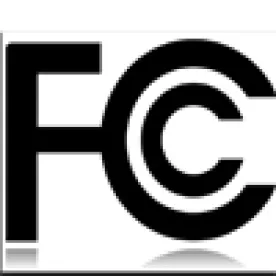On October 23, 2018, the FCC adopted a Report and Order in its 3550-3700 MHz Citizens Broadband Radio Service (CBRS) proceeding. The Report and Order makes several modifications to rules governing the band, including extending license terms to 10 years, adding license renewability, and increasing the size of Priority Access License (PAL) areas from census tracts to counties. Most notably, these items are the last substantial rule tweaks the Commission needed to resolve to move forward with its plans for CBRS deployment.
CBRS is somewhat of an experiment in spectrum management by the FCC. It will entail third party Spectrum Access System (SAS) managers that will coordinate three tiers of users – General (unlicensed), Priority (auctioned licensees), and Incumbent (largely earth stations and federal users). The goal is for each SAS to provide advanced, highly automated frequency management that will assign spectrum in nearly real time. If it works, it will provide more intensive use of the band than manual coordination, while mitigating interference between the three tiers of users.
Way back on December 21, 2016, the FCC conditionally certified seven entities seeking to provide SAS services. That conditional certification allowed further testing and pilot programs to commence, but did not authorize full commercial SAS deployment. Full SAS certification is expected in early 2019, at which point users will be able to begin operating under the General Access tier. Auction of the Priority Access tier licenses has not been announced, but likely will not occur until at least late-2019, given the Commission’s typical auction timelines.
The question now has become whether the Commission has taken so much time that additional relief is required. This process started in 2015 when the FCC first adopted its initial CBRS rules. At that time, the FCC gave incumbent users in the 3.65-3.7 GHz band a deadline to move out of the band or transition to CBRS service. That deadline expires for many licensees as early as April 17, 2020. That means some current users must transition system in the next 18 months even though the CBRS service is not even commercially authorized yet.
Two entities representing wireless ISPs and utilities have filed a request asking the FCC to extend the transition period for 3.65-3.7 GHz band users until January 8, 2023. This would allow time for SAS providers to become fully certified, the CBRS service to fully commence, and 3.65-3.7 GHz band users the time necessary to transition their service in a considered manner. There seems to be little, if any, downside to granting the request. The 3.65-3.7 GHz portion of the band has been successfully used for more than 10 years to provide applications such as rural wireless Internet access and critical infrastructure data communications. There’s an argument it was not necessary for the FCC to require users in this portion of the band to migrate from their legacy systems at all. An unnecessarily condensed migration time frame will not allow users to evaluate the CBRS and may encourage users to move to other bands, such as 5 GHz. This isn’t good for the viability of CBRS. In light of the length of time it has taken to bring the CBRS to reality, it certainly seems like a good decision not to rush the final remaining steps.
The FCC currently is seeking comment on the extension. Comments are due December 12, 2018 and Reply Comments are due December 24, 2018.




 />i
/>i

